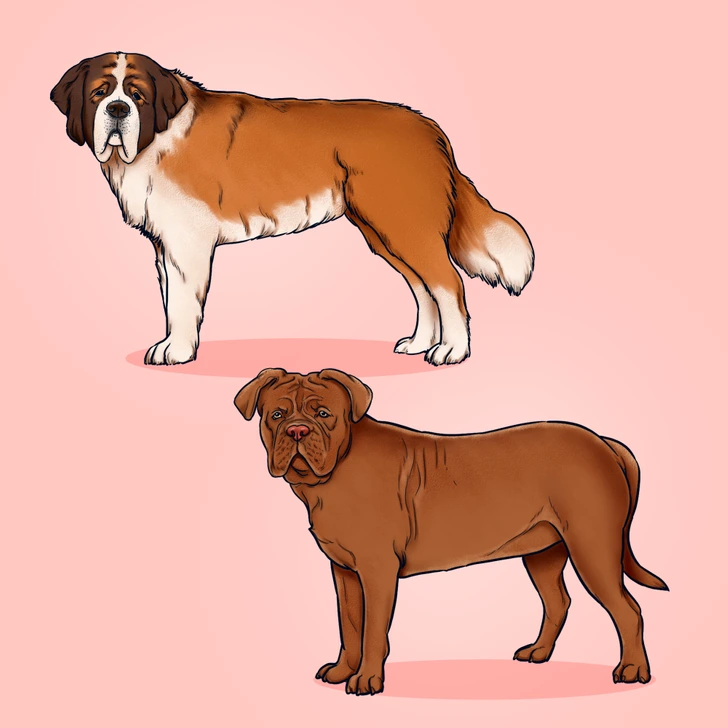Dogs are more than just pets—they’re beloved family members who bring us joy, loyalty, and unconditional love. But as any dog owner knows, their time with us is far too short. Knowing how long a specific dog breed typically lives can help you make informed decisions and prepare for the responsibilities that come with their care. From small breeds that can live two decades to larger ones with shorter lifespans, understanding the factors that affect a dog’s longevity is crucial.
Factors That Influence a Dog’s Lifespan
A dog’s life expectancy isn’t just determined by its breed. While genetics play a significant role, other factors like lifestyle, health, hygiene, and nutrition also contribute to how long your furry friend will live. Let’s break these down:
Lifestyle: Active Dogs Live Happier Lives

Exercise and mental stimulation are key to extending your dog’s lifespan. Dogs thrive when they’re given daily walks, opportunities for play, and plenty of attention. High-energy breeds may benefit from off-leash running in safe areas, while others might prefer activities like fetch or agility training.
Consider enrolling your dog in training classes or socializing them at dog parks. These activities not only keep their bodies healthy but also stimulate their minds, which is especially important as they age. Remember, a bored dog is often an unhappy (and sometimes destructive) dog.
Health: Preventative Care Is Essential
Just like humans, dogs need regular check-ups to stay healthy. Routine vet visits, vaccinations, and screenings for common illnesses can help detect problems early. For example, some breeds are prone to specific conditions—such as hip dysplasia in German Shepherds or heart issues in Cavalier King Charles Spaniels—so knowing your dog’s risks allows you to address them proactively.
Oral hygiene is another often-overlooked aspect of canine health. Neglecting your dog’s teeth can lead to periodontal disease, which not only affects their mouth but can also lead to serious health issues like heart or kidney problems. Brushing your dog’s teeth with vet-approved toothpaste is an easy way to help them live longer.
Hygiene: Clean Dogs Are Healthy Dogs
Maintaining good hygiene can significantly impact your dog’s well-being. Regularly bathing and grooming your dog according to their coat type prevents skin issues and keeps them comfortable. Dogs with long or medium-length fur need frequent brushing to prevent matting and to distribute natural oils.
Don’t forget to check their paws for debris or dirt after walks and clean their bowls daily to prevent bacteria buildup. Regularly wash and disinfect their toys, bedding, and clothing to ensure a clean environment. Paying attention to their ears and eyes can also help catch infections early.
Nutrition: A Balanced Diet Is Key
Your dog’s diet plays a major role in their lifespan. Whether you choose commercial dog food or prepare meals at home, ensure that their diet includes the right balance of proteins, fats, carbohydrates, vitamins, and minerals. Avoid overfeeding, as obesity can lead to a host of health problems like joint issues, diabetes, and a shortened lifespan.
Consult your veterinarian to tailor your dog’s diet to their breed, size, and activity level. And, of course, always provide fresh water—hydration is as vital for dogs as it is for humans.
Which Dogs Live Longer? Small vs. Large Breeds
Interestingly, in the canine world, smaller dogs tend to live longer than larger ones. While the exact reason isn’t fully understood, experts believe it’s related to the earlier onset of age-related diseases in large breeds. Here’s a general breakdown of life expectancy by size:
- Small Dogs: Typically live 10–15 years, with some breeds reaching 18 years or more.
- Medium-Sized Dogs: Generally live 10–13 years, although some breeds exceed this range.
- Large Dogs: Often live 8–12 years, with giant breeds sometimes having even shorter lifespans.
Mixed-breed dogs often outlive purebred dogs, possibly due to their genetic diversity, which lowers the risk of inherited diseases.
Life Expectancy of Popular Dog Breeds

Here’s an overview of the average lifespans for some of the most popular dog breeds:
- Labrador Retriever: 11 years
- German Shepherd: 11 years
- Golden Retriever: 11 years
- French Bulldog: 8–10 years
- Beagle: 12–15 years
- Poodle: 12 years
- Rottweiler: 9 years
- Great Dane: 6–8 years
- Siberian Husky: 12–15 years
- Shih Tzu: 12–16 years
Dog Breeds With the Shortest Lifespan
Certain breeds are known for their shorter lifespans due to their size or susceptibility to health issues. Here are some examples:
- French Mastiff: 5–8 years
- Great Dane: 6–8 years
- Bernese Mountain Dog: 6–8 years
- Irish Wolfhound: 6–10 years
- Saint Bernard: 8–10 years
Top 10 Longest-Living Dog Breeds
If you’re looking for a furry friend with the potential for a long life, consider one of these breeds:
- Mediterranean Maltese: 12–15 years
- Jack Russell Terrier: 13–16 years
- Yorkshire Terrier: 16–20 years
- Toy Poodle: 14–20 years
- Cockapoo: 12–18 years
- Lhasa Apso: 14–20 years
- Dachshund: 14–20 years
- Chihuahua: 14–20 years
- Pomeranian: 12–16 years
- Scottish Collie: 12–16 years
These breeds are known for their longevity, but a healthy lifestyle and proper care are still essential to help them live their longest and happiest lives.
Recognizing Signs of Aging in Dogs

As dogs grow older, they show signs of aging, much like humans. Being aware of these changes can help you adjust their care:
- Cloudy Eyes: Vision may decline as they age.
- Frequent Urination: Kidney issues are common in older dogs.
- Behavioral Changes: Dogs may become more irritable or confused due to dementia.
- Difficulty Moving: Arthritis or hip dysplasia can make it harder for them to get up or walk.
- Weight Changes: Thyroid issues can lead to weight gain or loss.
- Lethargy: Older dogs often lose interest in activities they once loved.
- Increased Sleep: Aging dogs tend to sleep more deeply and for longer periods.
Conclusion: Cherishing Every Moment
No matter the breed, every dog deserves love, care, and attention. While some dogs are blessed with longer lifespans, the quality of life you provide plays a huge role in how long your furry companion will stay by your side. By focusing on their health, nutrition, hygiene, and overall well-being, you can ensure that your dog lives a happy, fulfilling life.
Dogs may not live as long as we’d like, but their loyalty and love leave an everlasting impression. So, whether you have a tiny Chihuahua or a majestic Great Dane, cherish every moment—they are, after all, our best friends.


